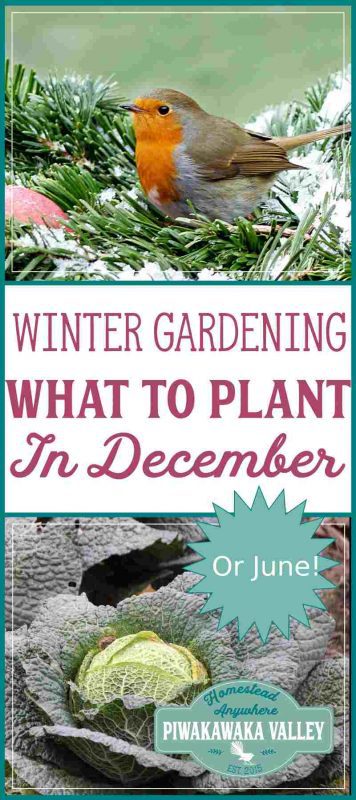Here is what to plant in your Winter vegetable garden in December if you are in the Northern Hemisphere and what to plant in your vegetable garden in June if you are in the Southern Hemisphere.
What you can grow in your Winter garden varies significantly depending on where you live. In warmer places – Zones 8-10 you can grow a few things.
Please read: This information is provided for educational purposes only and is not intended to treat, diagnose or prevent any disease. We encourage you to make your own health care decisions in partnership with a qualified health care professional.
This post contains affiliate links, this means at no extra cost to you, we make a commission from sales. Please read our Disclosure Statement
In cooler areas Zones 5-7 there are very few, if any things that you can grow at this time of year. It is however, a great time to reassess what worked and didn’t work in the past season, and plan for the new season.
Make sure you keep sensitive plants in doors and protected from frosts, and make sure everyone is well mulched and well watered.
To use the lists below, first you need to discover what USDA Zone you live in.
If you are looking for more information about vegetable gardening, I suggest that you also have a good read over our growing a prolific garden information.
We recommend that you get your seeds from Seeds for Generations as they are a homegrown, US family business specializing in heirloom seeds.
Jobs to do in the Garden in Early Winter
Pruning of existing pears and apples can be done once the leaves turn yellow. Make sure that you use sharp, clean secateurs and pruning saws and, as with anything, it is worth getting good quality tools and looking after them well.
Carrots and beetroot can be lifted and kept in a corner of the garden covered in loose soil, damp sand or sawdust. This will be easier to dig than frozen, sodden soil.
Green manure crops that have reached 15cm/6in can be dug in now. Chop them with a spade and only dig them into the top 4 inches of soil, as that is where the microorganisms are most active.
Raspberries need their old fruiting canes cut down to ground level once they have finished fruiting.
New berry fruit plants may be planted now, mulched thickly in compost.
This is the perfect time of year to assess your garden.
Some things to think about include:
How good is the soil? What can you do to improve it?
Are there any wet, dry, hot, windy or shady spots that need to be remedied?
Is your garden suited to outdoor tomatoes, green beans, capsicum/chili?
It might be necessary to look at what has grown well and focus on growing the things that grow best.
Get yourself some manure – either from your own animals, a local farm or (last resort) a gardening store. Treat your whole garden to some manure and a thick layer of mulch.
What to Plant in your December (or June) Winter Vegetable Garden Depending on your USDA Zone
All Zones should be starting your seeds back inside, or at least in a greenhouse or under covers.
Obviously if your ground is already frozen solid, or you are covered in snow, you are going to have a hard time planting anything. Try growing under a caterpillar tunnel or under trees/ in sheltered spots.
Zone 1-3
Garlic
Turnips
Fava/Broad Beans
Zone 4-5
Garlic
Turnips
Fava/Broad Beans
Zone 6-7
Onions
Collard greens
Lettuce
Radish
Fava/Broad Beans
Zone 8-9
Beets
Collard greens
Onion (bulbing)
Broccoli
Kale
Onion (multipliers)
Brussel sprouts
Kohlrabi
Parsley
Cabbage
Leek
Radish
Mustard
Spinach
Chinese cabbage
Onion (bunching)
Strawberry
Fava/Broad Beans
Zone 10
Collard greens
Onion (bunching)
Onion (bulbing)
Beets
Endive/Escarole
Onion (multipliers)
Broccoli
Kale
Parsley
Brussel sprouts
Kohlrabi
Radish
Cabbage
Leek
Carrots
Lettuce
Turnips
Cauliflower
Mustard
For further reading, I really recommend all of these books. I own every one of them and they are amazing resources!
Please Pin and Share!







